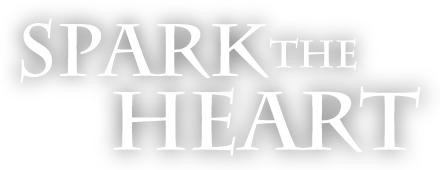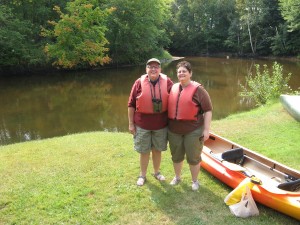It was advertised as a great family trip, a leisurely four hour, 15 mile kayak on the Manistique River through a wildlife refuge. I had watched the video on youtube of a father and son, all smiles as they paddled past trees and the chirping of birds.
Marika and I love nature, love being on the water. We’ve kayaked many times together, in bays, along sloughs, we even paddled across a stretch of the Pacific Ocean to get to a great birding spot. So we thought, what better outing than to kayak through the wildlife refuge.
“You’ll pass under the Ten Curves Bridge, then in another 2 miles you’ll go under the M-77 bridge.” The woman at the kayak rental pointed to a spot on the map. “That’s your last chance to get off the water. After that you’re on your own until the put out, 15 miles down.”
We eased down the muddy bank and got in the two seater kayak with Marika in the front for unobstructed bird viewing. We pushed off and started paddling. It was so nice to be on the water, in the quiet, surrounded by the forest of tall, green trees.

We found a rhythm of paddle left, paddle right, gliding, almost effortlessly in the water. We hadn’t kayaked together in more than four years but it was coming back so naturally.
The river was quiet and slow as we approached the Ten Curves bridge. The kayak floated, barely moving, as we stopped to take pictures.
We followed the lazy turns in the river, steering left, then right, then straight ahead. Marika spotted a kingfisher so we stopped to watch him hover, then dive into the water. Further down a great blue heron fished along the shallow bank, then took flight, his wings spread wide, as we got closer.
We approached the M-77 bridge a few minutes later. The air was cool, the sky clear and open and, after two miles, neither one of us was at all ready to call it quits.
We passed the sign welcoming us into the Seney Wildlife Refuge and paddled alongside a pair of wood ducks near the river bank. We followed the curve of the bank, scanning the trees for birds. Suddenly the river narrowed. The low hanging branches of the trees that had barely been touching the water now reached halfway across our path.

We steered the kayak sharply to avoid the branches, then had to quickly turn in the opposite direction to avoid a submerged log. The clear calm water had become an obstacle course of low hanging branches, sunken logs and jagged rocks.
A canoe with two men and a woman appeared with fishing rods. We watched as they guided their boat ahead of us, the man in the back of the boat nearly losing his fishing hat as he limbo-ed under a very low hanging tree.
We followed their path, Marika calling out directions – rudder right, hard left – as we maneuvered around the low tree, We turned a sharp right to avoid another branch and got caught on top of a fat log. We were balanced along the length of the log, but our kayak was completely out of the water.
Before we had a chance to consider our predicament, the canoers paddled over and pulled us off and into the water. After many thank yous, they paddled ahead and disappeared around the next curve.

Marika continued to navigate, avoiding the obvious ripples in the water that indicated there was something underneath the surface. We got stuck on a sandbar but easily pushed ourselves off with the oars.At one point we got caught against a big log. We couldn’t paddle left or right so we let the current turn us around, then we paddled hard against the water to get back on course.
We passed the sign marking the first five miles. Marika looked at her watch–we’d been on the water almost two hours and we were getting hungry. I took two apples out of the dry bag that I was using as a foot rest to give me more leverage as I paddled. We floated and ate, keeping a keen eye out for the path of least obstacles.
We took turns paddling and resting. Marika’s shoulders were sore. My hands were cramping. I dragged them through the cold river water, fingers spread, to relieve the tightness.
The map indicated a wide sandy beach just before the half way point where we planned to stop for lunch. We passed several small patches of sand, then saw a wider stretch of beach and paddled to it. With the front of the kayak solidly on the beach, I got out and pulled Marika and the boat out of the water.
 We sat in the sand and opened up the dry bag, preparing for a feast. But Marika’s ham and cheese sandwich was now a squishy mayonnaisey mess from me stepping on it. She managed to pull one thick slice of ham from the wet mess. We shared some carrots, my leftover chicken tenders, some lettuce, a package of peanut butter crackers and an orange.
We sat in the sand and opened up the dry bag, preparing for a feast. But Marika’s ham and cheese sandwich was now a squishy mayonnaisey mess from me stepping on it. She managed to pull one thick slice of ham from the wet mess. We shared some carrots, my leftover chicken tenders, some lettuce, a package of peanut butter crackers and an orange.
Back in the water we found our rhythm, still navigating the fallen trees, the submerged logs, the hidden rocks. The sun was lowering, casting its own shadows on the water so that now we couldn’t tell which way the river turned, much less, what was in our way.
We paddled slower, with more precision, ready to act quickly when we came upon a hazard. I traced the curves in the river on the map, calculating how far we’d paddled, scanning the banks for the sign that would indicate we only had 15 more minutes before we’d see the place to pull out.
“I see the sign,” I said, ecstatic that we had made it. But as we got closer to the sign, I realized that it wasn’t the sign that we were almost done. It was the sign for the halfway point.
Words cannot express our shock, our disbelief, our incredulous realization that we still had 8 more miles and at least 3 more hours to paddle.
We were tired. We were sore. We were spent. And yet we had no choice. There was no rescue boat to call. No bank to pull out on. There was no way out except to keep going.
“Oh my god, you ‘re kidding me,” was all I could say, while Marika kept repeating, “We just have to do it.”
 We laughed at how ridiculous our situation was. We imagined scenarios where a motor boat would come speeding down the river and tow us to safety. We joked how the rental place never asked us about our kayaking experience or our endurance.
We laughed at how ridiculous our situation was. We imagined scenarios where a motor boat would come speeding down the river and tow us to safety. We joked how the rental place never asked us about our kayaking experience or our endurance.
“I have to cry,” I said. I needed to release the frustration, to get past the wall I’d hit. The tears helped and after a few minutes I had a second wind.
We paddled steadily for what seemed like hours. We wondered if we would make it to the pick up point before dark. We hoped someone would still be there to pick us up.
And then we saw our canoe friends. It was such a relief to know we weren’t alone. They had snagged several of their lures on the logs but had caught two good sized pike, but they were also tired and ready to get off the water.
They stayed close behind us, following our trail around the debris in the water, encouraging us, saying we were looking good, that we were, indeed, gonna make it.
And then we saw the sign marking the 15 minutes to the pullout. We all cheered, keeping our eyes on the banks for the concrete marker. “We’re almost there!” I said, as we turned a curve and saw our kayak outfitter guy standing on the shore.
We paddled close enough for him to pull us up the steep bank. We were too sore and too stiff to say much as he pulled Marika and then me, up and out of the boat.
But we did it! We paddled fifteen miles in six hours on a twisted curvy natural river with fallen trees and submerged logs. We didn’t give up. Because we couldn’t. We had to keep going.
Life is like this, too.
You hit a patch of pain, or grief or uncomfortableness.
It hurts so much that all you want to do is stop.
Or turn around.
But you can’t.
The only way out of it is to go through it.
If you’re lucky, you have someone to help, to get you unstuck, to cheer you on. Maybe you even have someone who paddles along with you.
But ultimately you have to have the strength and determination within yourself to keep going if you’re going to make it through. Because it’s the only way.


I’ve been battling an infection in my jaw for 6 1/2 years and people tell me, “I don’t know how you make it. You’re such an inspiration.” I don’t have the heart to tell them that I am not brave or have some super human way to deal with my life defined by this infection. I have to do just what you so lovely described … the only way out is to go through it. But, I have to continually remind myself that there are lessons to be learned along the way, people to meet and moments to be awed by what God has done with my lowly life.
Kerri, I admire your attitude. One day at a time…opening to the love and support around you in your awesome and marvelous life! Even if you can’t see that it is awesome and marvelous right now, the fact that you are alive makes it so.